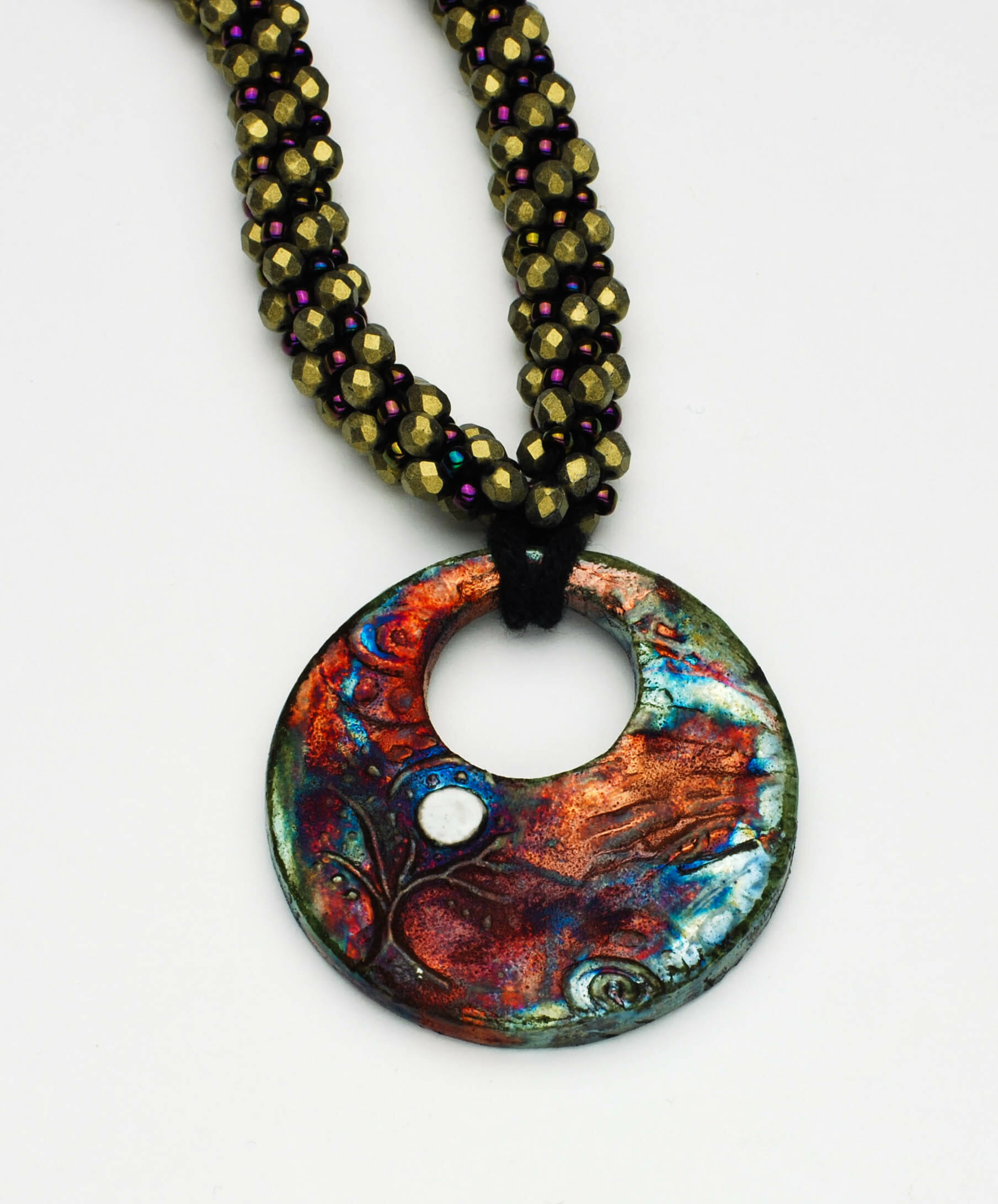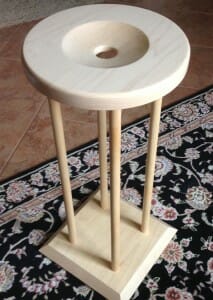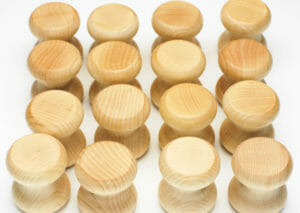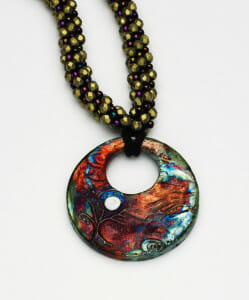
Adventures in Kumihimo
I’ve been feeling guilty about not writing blog posts in a timely fashion. My excuse this month, however, allows me to feel a tad less delinquent: I’ve been learning Kumihimo using a Marudai. What great fun! Many of you may be familiar with kumihimo but I’d like to offer a brief introduction for those of you who are not.
Kumihimo is the ancient art of cord braiding. Though the techniques were used by many cultures around the world, the word has largely come to represent the textile traditions of Japan.
Historically, Kumihimo began around 645 A.D. But it wasn’t until Buddhism (and the influence of other Chinese religions) was at its height during the Heian period (794 – 1185 A.D.) that cord braiding was elevated to its current functional status. Monks produced fine braids as a form of meditation. Their work was used extensively for temple interior decoration.
During the Kamakura and Muromachi periods (1185 – 1573 A.D.) kumihimo demand soared. It was used to enhance armor for Samurai warriors and their horses. Braided ribbons were employed to wrap sword handles and to join leather and iron plates.
As the art form grew, so did the methods to produce it. Braiding stands became increasingly popular throughout the Orient. The equipment allowed for increased efficiency in the creation of more complex braids.
Braiding stands remain popular today in many parts of the world. The Marudai, in particular, is a favorite among crafts people. It was introduced in the West during the 20th century.
The Marudai has a “stool-like” appearance. The Japanese version is made with solid wood (typically, hard maple). The top plate (kagami, or mirror) is velvety smooth and has a central hole where the finished braids are suspended with counterweights. The mirror is supported by 4 legs and a matching base plate.

Additional braiding stand photos can be found at Braid Society.
To create a braid, cords are wrapped around weighted bobbin’s, or tama which hang freely around the mirror. Quantity of tama and their positions on the mirror determine the type and complexity of the braid achieved.

It is said Kumihimo takes a lifetime of practice and dedication. Why? Patterns worked on the Marudai require good technique and focused attention. Confidence and skill grow with practice.
Providing my eyesight doesn’t fail me in old age, I look forward to a lifetime of continued practice and dedication using the Marudai.
